Archived Storm Damage Blog Posts
Protecting Your Home from Storm Damage | SERVPRO of East Lansing / Haslett
9/16/2024 (Permalink)
 Don't delay! When storm damages affects your property, call SERVPRO of East Lansing/Haslett to restore your space.
Don't delay! When storm damages affects your property, call SERVPRO of East Lansing/Haslett to restore your space.
Understanding the Threats: Michigan StormsMichigan weather can be unpredictable, especially around the East Lansing area. From heavy snow in winter to thunderstorms and even the occasional tornado in summer, the impact on your home can be significant. Understanding these threats is the first step in preparing your property for what Mother Nature may bring.
Winter storms, for instance, can cause ice dams, which may lead to roof leaks. Meanwhile, spring and summer bring their own challenges, with thunderstorms capable of producing high winds that can damage roofing, siding, and windows. And let’s not forget the potential for flooding during heavy rains, which can compromise your home’s foundation and basement.
Steps to Recover from Storm DamageWhen a storm hits, it’s crucial to know how to respond quickly and effectively. Here are some steps you can take to begin the recovery process:
Assess the Damage: After ensuring your safety, inspect your home for visible damage. Look for missing shingles, broken windows, or water intrusion. Taking photos for insurance purposes can also be beneficial.
Temporary Repairs: If possible, make temporary repairs to prevent further damage. Tarping a damaged roof or boarding up broken windows can help protect your home from the elements.
Call in the Experts: Storm damage can be complex, and fixing it often requires professional help. That’s where SERVPRO of East Lansing/Haslett comes in. Our team has the experience and tools needed to restore your home quickly and efficiently.
Insurance Claims: Dealing with insurance after a storm can be stressful. Our team can assist you in documenting the damage and working with your insurance company to ensure you get the coverage you need.
Why Choose SERVPRO®?At SERVPRO of East Lansing/Haslett, we understand the stress and uncertainty that comes with storm damage. Our goal is to make the restoration process as smooth as possible. We’re here 24⁄7, ready to respond to emergencies and help you get your life back to normal.
Don’t wait until the next storm hits. Take action now to protect your home.
If you’ve experienced storm damage, visit our website for professional restoration services you can trust.
Protect Your Home from Summer Storms | SERVPRO of East Lansing/Haslett
7/15/2024 (Permalink)
 When storms strike, call SERVPRO of East Lansing/Haslett to restore your property to preloss condition faster!
When storms strike, call SERVPRO of East Lansing/Haslett to restore your property to preloss condition faster!
Summer in our Michigan community brings warmth, sunshine, and unfortunately, summer storms. These storms can lead to severe damage to your home if you’re not prepared. At SERVPRO of East Lansing/Haslett, we’re Here to Help® you prevent storm damage and keep your home safe. Here are some essential tips to protect your property this summer.
Assess and Maintain Your RoofYour roof is your home’s first line of defense against summer storms. Regularly inspect your roof for any signs of wear and tear, such as missing or damaged shingles. Consider scheduling a professional roof inspection before the storm season hits. If your roof is over 20 years old, it might be time to consider a replacement. A well-maintained roof can withstand high winds and heavy rain, preventing leaks and structural damage.
Clean and Secure Your GuttersGutters play a crucial role in directing rainwater away from your home. Clogged gutters can cause water to overflow, leading to foundation damage, basement flooding, and even mold growth. Clean your gutters regularly, especially before and after storms. Ensure that downspouts direct water at least five feet away from your foundation. Consider installing gutter guards to minimize debris buildup.
Trim Trees and Secure Outdoor ItemsStrong winds can turn loose branches into projectiles, causing damage to your home and vehicles. Trim trees and shrubs around your property, removing any dead or overhanging branches. Additionally, secure outdoor items like patio furniture, grills, and garden tools. These items can become dangerous in high winds, causing damage to windows, siding, and other parts of your home.
Inspect and Seal Windows and DoorsCheck the seals around your windows and doors to ensure they are in good condition. Strong winds and driving rain can exploit even the smallest gaps, leading to water infiltration. Use weather-stripping or caulk to seal any gaps and consider installing storm shutters for added protection. This can prevent water damage and improve your home’s energy efficiency.
Create an Emergency PlanPreparation is key to minimizing damage during a storm. Create an emergency plan for your family, including a safe room or shelter area in your home. Stock up on emergency supplies like water, non-perishable food, flashlights, and batteries. Ensure everyone in your household knows the plan and practice it regularly.
At SERVPRO of East Lansing/Haslett, we’re dedicated to helping homeowners protect their properties from summer storms. By taking these preventative measures, you can reduce the risk of damage and keep your home safe. If you do experience storm damage, our team is Here to Help® with professional restoration services.
Don’t wait until it’s too late!
Call SERVPRO of East Lansing/Haslett after a storm leaves your home damaged for fast recovery, day or night.
Easy Ways to Protect Your Home from Strong Thunderstorms | SERVPRO of East Lansing / Haslett
6/17/2024 (Permalink)
 Whether its storm damage cleanup or restoration, SERVPRO of East Lansing/Haslett is ready to respond in a moments notice to your call.
Whether its storm damage cleanup or restoration, SERVPRO of East Lansing/Haslett is ready to respond in a moments notice to your call.
Understanding the RisksLiving in East Lansing or Haslett, you’re no stranger to the powerful thunderstorms that roll through our area. While they can be awe-inspiring to watch, they also bring the potential for damage to your home. From high winds to lightning strikes, thunderstorms can wreak havoc if you’re not prepared. But fear not! With a few simple steps, you can safeguard your home and family from the worst that Mother Nature has to offer.
Strengthen Your Roof and WindowsOne of the most vulnerable parts of your home during a thunderstorm is the roof. High winds can easily lift shingles or even tear them off entirely, leaving your home susceptible to water damage. To combat this, ensure that your roof is in good condition and take the time to check it after every high wind event. Additionally, installing impact-resistant windows can help protect against flying debris and reduce the risk of breakage.
Homes with fortified roofs and windows are significantly less likely to sustain severe damage during extreme weather events. By investing in these upgrades, you can not only increase your home’s resilience but also potentially lower your insurance premiums.
Maintain Your Trees and LandscapingWhile trees can provide shade and beauty to your property, they can also pose a hazard during thunderstorms. Weak or overhanging branches are prone to snapping off in high winds, potentially causing damage to your home or vehicles. Regularly inspect your trees and trim any branches that could pose a threat. Additionally, consider planting native species that are more resistant to strong winds and heavy rain.
Proper tree maintenance can reduce the risk of storm-related damage by up to 60%. By keeping your landscaping in check, you can minimize the likelihood of costly repairs and ensure the safety of your property.
Conclusion: Protect Your Home TodayDon’t wait until the next thunderstorm is on the horizon to take action. By following these easy tips, you can fortify your home against the elements and enjoy greater peace of mind.
Remember, preparation is key when it comes to weathering the storm—but storms are still unpredictable. If you do experience damage after a storm, we’ve got your back. With one call you can start recovery fast and get life back to normal.
Visit SERVPRO of East Lansing / Haslett 24⁄7 when you need storm restoration.
Easy Ways to Protect Your Home from Flooding | SERVPRO of East Lansing/Haslett
6/10/2024 (Permalink)
 When flooding happens, call SERVPRO of East Lansing/Haslett to restore your property to preloss condition.
When flooding happens, call SERVPRO of East Lansing/Haslett to restore your property to preloss condition.
Flooding can be a homeowner’s worst nightmare, but with some proactive measures, you can significantly reduce the risk. Here are some friendly and easy tips to help you protect your home from potential water damage.
Keep Your Gutters Clean and Functional
One of the simplest ways to prevent flooding is by maintaining your gutters. When gutters are clogged with leaves, twigs, or other debris, water can overflow and pool around your home's foundation. Make it a habit to clean your gutters at least twice a year, especially in the spring and fall. If you’re not up for the task, consider installing gutter guards to minimize debris buildup.
Install a Sump Pump
A sump pump is a great investment for any homeowner, especially if your property is prone to flooding. This device is designed to pump out water that accumulates in your basement or crawl space, keeping these areas dry. Make sure your sump pump is working correctly by testing it regularly, and consider having a battery backup system in case of power outages during storms.
Landscape Wisely
The way you landscape your yard can have a big impact on flood prevention. Ensure that the ground slopes away from your house so that rainwater flows away from the foundation. You can also use native plants and mulch to help absorb excess water. Additionally, consider installing a rain garden, which is designed to catch and slowly release rainwater, reducing the risk of flooding.
Seal Cracks and Leaks
Inspect your home for any cracks or gaps in the foundation, walls, or windows. Even small openings can let water seep in during heavy rains. Use caulk or sealant to fill these gaps and prevent water intrusion. Regularly check your roof for missing or damaged shingles and repair them promptly to avoid leaks.
Elevate Appliances and Utilities
If your home is in a flood-prone area, it's wise to elevate your appliances and utilities. Place your furnace, water heater, washer, and dryer on platforms or concrete blocks to keep them above potential flood levels. This simple step can save you a lot of money and hassle in case of a flood.
Install Flood Sensors
For added peace of mind, consider installing flood sensors in vulnerable areas like the basement or near sump pumps. These sensors can detect water and alert you immediately, allowing you to take swift action to minimize damage.
Maintain Proper Drainage
Ensure that your property has proper drainage systems in place. Check that your downspouts extend at least six feet away from your home to direct water away from the foundation. If necessary, install additional drainage solutions like French drains to improve water flow and reduce the risk of flooding.
By taking these easy and proactive steps, you can protect your home from flooding and enjoy peace of mind, even during heavy rains. Remember, a little preparation goes a long way in safeguarding your home and loved ones from water damage.
Even the most prepared home could still see damage from flooding. That’s why SERVPRO® is ready to respond the moment you call.
Storm Planning to Avoid Weather Anxiety | SERVPRO of East Lansing/Haslett
5/15/2024 (Permalink)
 When the storm has passed, call SERVPRO of East Lansing/Haslett to help you recover.
When the storm has passed, call SERVPRO of East Lansing/Haslett to help you recover.
The dog is pacing, the kids are asking a million questions and the storm clouds are getting closer and closer as thunder booms. If this sounds like a common scene at your house, it might be hard to know how to even begin preparing for severe weather.
In our community, most conversations about severe weather happen in the winter as we face strong winds, heavy snow and freezing temperatures. Strong thunderstorms and tornadoes can’t be ruled out, though, which means we need to be prepared for anything.
When we are prepared, we can respond appropriately and avoid weather anxiety.
Knowing What to Look ForIn order to be prepared, we need to know what to look and listen for. Spend some time outside with the kids looking at the clouds. Let them tell you what shapes they see, and while they do, talk to them about what dark, blue-black or green clouds can mean. Make sure they know that the sound of thunder means lightning is nearby and that they need to seek shelter. Tell them if they ever see clouds spinning to head indoors quickly.
Getting to know the clouds is a great start to better understanding weather. Further teach your kids about storms by talking about sirens and weather warnings. If you can hear a siren from your house, find out the next time it will be tested and take the kids outside to hear it. Make a game out of it and see who can reach your safe space fastest when the siren goes off.
Preparing for the EventIf you don’t already have one, start creating a storm emergency plan with your family. It should include where to go and what kind of emergency supplies you should have in different situations.
For thunderstorms, strong winds and tornadoes, a low lying room is the best place to stay. Show the kids the best spot in your house, and then let them play there. Set up some comfort items like blankets and books to make the space feel calm. A warm spot in your house might be ideal during a winter storm, especially if the power is out long-term.
You may already have an emergency kit for winter storms, but if you don’t, let the kids help you prepare one. Gift them with their own fun flashlight, and add in plenty of extra batteries. Snacks and water are another fun item your kids can help you pack away.
Update your kit seasonally, ensuring you have plenty of supplies for storms in both warm and cold weather. This is especially important in the winter as you will need to include heating fuel, candles and other ways to stay warm.
Let the kids add in some games and books that don’t require batteries or electricity. Card games and board games can help pass a lot of time and keep everyone’s anxiety lowered.
Keeping CalmWeather-related fears and anxieties are common for people of all ages, but they can be particularly challenging for children to deal with. Make your kids feel safe at home by educating them as much as you can about weather, but make sure they also understand that extreme damage isn’t a regular occurrence during storms. Most homes will only see minor issues to their roof, siding and property in the majority of severe weather situations.
The more you can do to keep your family calm, the easier it will be to ride out every storm with confidence.
Storm damage should always be addressed quickly. Contact SERVPRO® day or night for the restoration services you need.
Going Back to the Basics of Flood Damage | SERVPRO of East Lansing/Haslett
4/1/2024 (Permalink)
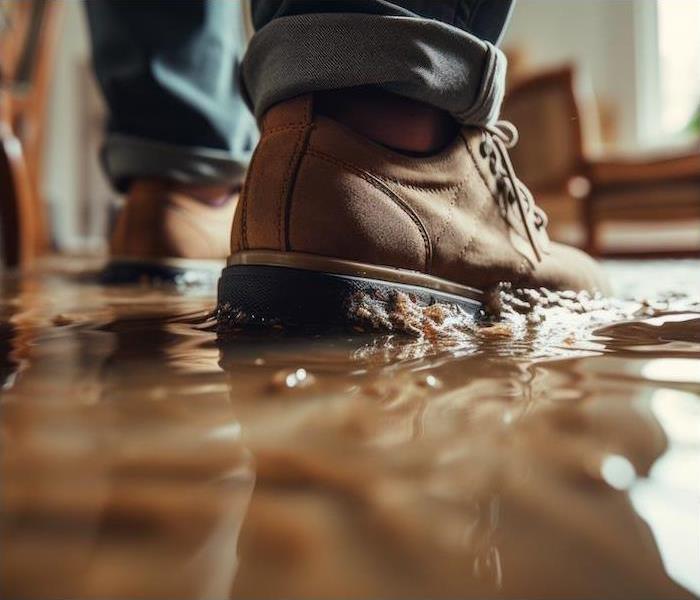 SERVPRO of East Lansing/Haslett is ready to help in a moments notice after spring showers leak in to your home or business.
SERVPRO of East Lansing/Haslett is ready to help in a moments notice after spring showers leak in to your home or business.
If you have school-aged children who bring home math homework, you know how important understanding the basics can be. In order to get anything done well and without a potential meltdown, the basics are always the best place to start.
Understanding the basics of disaster preparations is also the best way to keep your home as safe as possible no matter what Mother Nature throws our way. While we won’t ever be able to control her altogether, the more prepared we are, the less damage she can do to our homes.
Flooding is one of the top natural disasters that leaves homes damaged every year around the nation—which means tackling the basics of flood safety is crucial for your home.
Know Your ZoneWater damage can originate from a lot of places, including those that have nothing to do with nature. Internal, manmade disasters, like a broken appliance, can certainly do a lot of damage, but they are often easier to control and recover from. With three rivers around our community, river flooding, flash flooding, and ponding from heavy rain are possible for all of us.
Getting to know where your home lies in a floodplain is a great first step in understanding your risks. This is especially crucial if you are near the Grand River, Red Cedar River or Sycamore Creek. Take a look at flood zones for your home and our community in order to know just how prepared you need to be.
Even if you are not near one of the rivers, heavy rains can still leave things pretty wet. Reynolds Drain and Mud Lake Drain often flood as well. If your home is in a lower lying area, consider adding additional drainage to your yard to avoid water seeping in.
If you have a lot of trees around your home, covering your gutters can be a great way to ensure rain flows quickly away from your home. Checking your roof regularly can also prevent potential blocks that could lead to a leak.
Prepare to PreventThe more you can get to know the area around you, the better you can understand the risks you could potentially face. There are some other steps you can take to get your home prepared as well, though. Start with some regular yard maintenance in order to ensure water moves away from your house as quickly as it falls from the sky.
Make sure there is gentle sloping away from your home throughout your yard. If you have a spot that stays wet, consider adding some organic material or a garden that will pull water down into the soil. With so many water sources in our area, underground gutter downspouts are a great way to not only ensure heavy rains can’t leave puddles in your yard, but to also ensure your gutters aren’t damaged when a river flood does strike.
On the inside of your home, keeping an eye on your basement, windows and doors is a great way to keep things sealed and dry. Update caulking or weather stripping when it ages, and have your basement professionally sealed if you find visible cracks or gaps. A sump pump is another handy tool for keeping water out, and it can be particularly valuable during a river flood.
Don’t make protecting your home from flooding complicated. Keeping up with some basic home maintenance and being prepared for a natural disaster will be far easier than teaching your kiddos multiplication.
Do you have water damage in your home? Contact us at SERVPRO® for fast recovery.
Make Sure You Are Ready for Spring Storms | SERVPRO of East Lansing/Haslett
3/1/2024 (Permalink)
 Let SERVPRO of East Lansing/Haslett help you get from April showers to May flowers.
Let SERVPRO of East Lansing/Haslett help you get from April showers to May flowers.
It may not seem like it with our winter temperatures that often hang around longer than most of us would like, but the spring season is upon us. As temperatures rise and any remaining snow starts to melt away, it isn’t uncommon for flooding, heavy rains and thunderstorms to arrive with the season as well.
Once spring fully sets in and summer isn’t far behind, storms can worsen in their intensity and become more frequent. That makes being prepared incredibly important. One of the best first steps in staying prepared for anything Mother Nature can bring is ensuring you have reliable ways to get up-to-date forecasts and weather alerts.
The Power of the InternetOur lives are almost always surrounded by some kind of screen, which makes our phones, tablets and other hand-held devices a great first choice for receiving weather-related news. You can sign up for Wireless Emergency Alerts that will be issued automatically for a variety of situations, but you can also choose a few other apps in order to get the best picture of what is headed your way.
Make sure you are choosing reliable, nationally recognized sources to get alerts from, and seek out some local sites. Many local TV and radio stations offer an app that can notify you not just on weather events but many other local situations as well. The city offers a couple of different emergency alert system options as well, so be sure to sign up for those.
Don’t rely on alerts alone, though. Be sure to keep an eye on weather reports so you are not caught off-guard even by a mostly mild storm rolling in. This can also help you make travel plans if flooding is possible, or keep you up to date about shelters opening.
Non-Electronic OptionsAs much as we love the internet and all the devices that put it into the palm of our hand, these devices have batteries that will eventually die. You need to have at least one way of receiving weather notifications that does not require electricity.
If there are weather sirens near your home, get to know the different tones they will use to announce various situations so you can respond quickly when you hear one. Invest in a weather radio, too—these can go with you if you have to move to safety and require no electricity, which means they can work long-term. Keep it on well after a storm has passed to stay up to date with travel information and be prepared for potential second waves when storms are particularly nasty.
Weather alerts can go a long way in keeping your family safe, but even the most prepared home could still end up damaged during a disaster. If your home doesn’t fare well during a storm or flood, call us day or night. We are ready to respond and get your recovery started right away.
Serious storms can cause serious property damage. Call SERVPRO® 24⁄7 for immediate restoration assistance.
The Threat of Wind, Water and Impact Damage | SERVPRO of East Lansing/Haslett
2/22/2024 (Permalink)
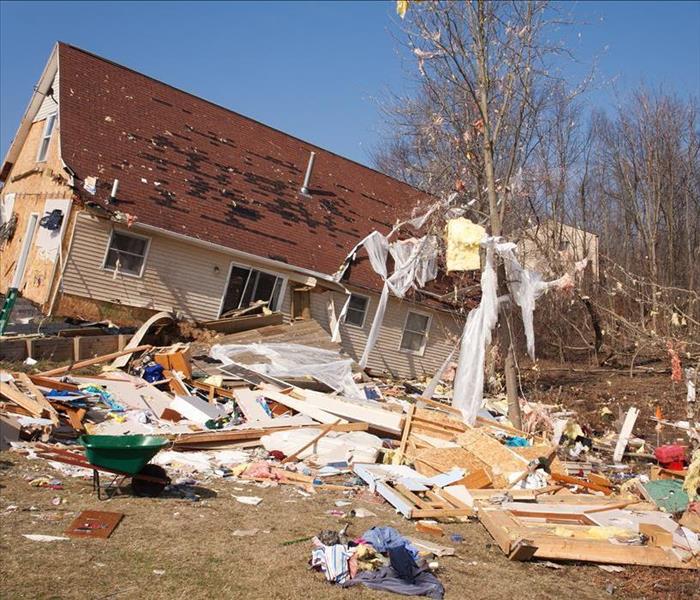 When a storm hits your home, SERVPRO of East Lansing/Haslett is quick to respond. Call us today to restore your space!
When a storm hits your home, SERVPRO of East Lansing/Haslett is quick to respond. Call us today to restore your space!
When the wind blows around here, we know when to take cover! Storms come in all shapes and sizes in the East Lansing area from a gentle rainstorm to a powerful blizzard, and each instance can produce serious consequences for our homes if we are not prepared.
Our team explains the possible damage situations that wind, water and impacts have on our homes, so read on to learn more and better prepare your home and family.
The Strength of Wind and Water
Rain can fall down softly or it can come in intense sheets that impact visibility across the area. No matter how it falls, rain can easily make its way into your home via the tiniest gap or crack along your roofline and down into your basement through a compromised or overwhelmed foundation.
Once inside, it can leak its way into every surface and cause serious damage. Even just an inch of standing water in your home can lead to structural issues, mildew and mold growth.
Strong wind can also cause damage, especially when it starts to pick up alongside a severe thunderstorm or a tornado. Straight-line winds can easily reach over 100 miles per hour, which is strong enough to topple trees, overturn cars and throw yard debris around with ease, causing the most unsuspecting window to become the victim of the storm.
The Threat of Impact Damage
Oftentimes, impact damages occupy our minds the most when it comes to storms. That’s because they cause some of the most obvious and outwardly disastrous situations! If a tree falls on your roof or house, it can impact entire levels or sections of your home.
These types of damages are severe enough that it might require you to live elsewhere for a time period while the repairs are taking place. While impact damage cannot always be prevented or predicted, removing projectiles from your property is a good place to start. Pull cars and yard equipment into your garage, tie down patio furniture and trampolines and keep your trees trimmed of dead branches and limbs.
Where Our Team Comes In
We know that Mother Nature can produce some serious storms, so we also know that storm damage can happen to any home, even if you have taken the proper precautions.
Our team will arrive quickly to secure your home from further damage and then we will get to work drying out and restoring your home from top to bottom. We will handle everything from the initial debris removal to the final repairs. Just call us and we will be there.
Storms can cause water damage but also serious structural damage. Contact SERVPRO of East Lansing/Haslett today.
What to Know About Home Damage | SERVPRO of East Lansing/Haslett
11/17/2023 (Permalink)
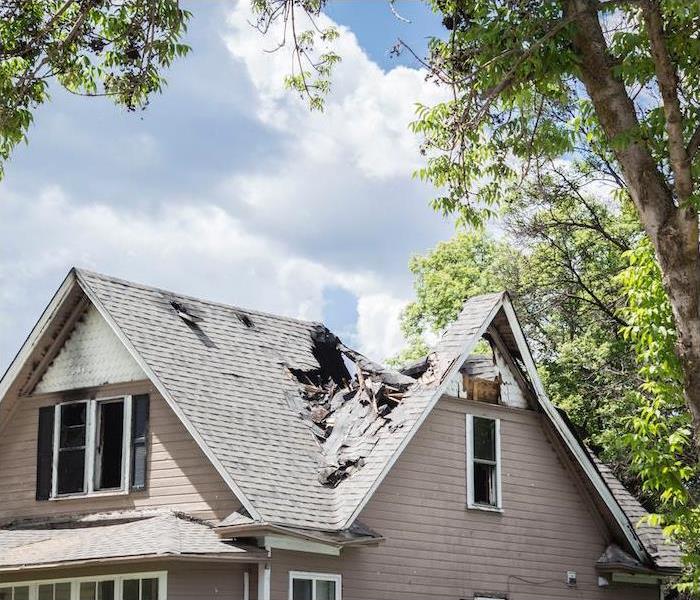 If you discover damage in your residence, call SERVPRO of East Lansing/Haslett right away.
If you discover damage in your residence, call SERVPRO of East Lansing/Haslett right away.
When you are a homeowner, there is a lot that you need to be prepared for and consider. We may not love thinking about it, but some of what you need to be prepared for is the possibility of damage to your home. It could be from severe weather, aging, fires or even just a neighbor who loves to practice teeing off while facing your windows.
Even though there are a lot of potential ways our homes are at risk, we can’t spend our days worrying. You can’t always predict or control a natural disaster, but with preparation, you can weather just about anything with as little damage as possible.
The best place to start when it comes to preparing for potential damage to our homes is getting to know the top threats. The more you know about what could happen, the more clearly you can see how simple preparing before and completing restoration after can be, especially with SERVPRO of East Lansing/Haslett right around the corner.
The Biggest RisksFrom tornadoes in the summer to snowy winter days, East Lansing has its share of potential weather risks that could leave your home damaged. On average, we can see nearly 15 tornadoes in a year. While they primarily are in the warmer months, they really can’t be ruled out early in the winter. In the cold months, snow and ice can put pressure on roofs and lead to flooding when it melts.
While our risks shift slightly seasonally, there are three kinds of threats that everyone should always be prepared for. Damage to your roof, the threat of fire and water damage are common ways homes are damaged all around the nation.
Water damage can come from internal sources like an appliance failure or external sources, including flooding from the Great Lakes or just a heavy rain. Fire, like water, can come from outside or inside your home, although the vast majority of house fires are caused by human error. Your roof is also vulnerable in a variety of ways, including strong winds, heavy snow loads or even just the random occurrence where a loose limb falls from the sky.
Compounding DamagesDealing with a threat heading toward your house or suddenly occurring is a scary enough situation that can become a lot scarier when you consider the kinds of damage you might be left with. When the Great Lakes rise, your home might not only be left wet, but also at risk for rapid mold growth that could damage your structure.
When a fire starts inside or outside, your home is at risk for damage not just where the flames are, but even into rooms that saw no flames as the odor, smoke and soot spread rapidly. The firefighting efforts also leave your home facing water and mold damage, or damage left behind from the chemicals in a fire extinguisher.
Whether a disaster was manmade or naturally occurring, your recovery process will require several steps. Working with SERVPRO® means you only need one contractor since we are trained and have the equipment to handle every part of your restoration process. We have experience in handling every kind of water and fire damage, and we can even tear down badly damaged parts of your home and rebuild them.
If your home has a basement flood or a roof leak, our first priority will be drying everything we can while we secure your home to prevent additional damages. This might include replacing your roof beams or removing odors in your furniture. We will also make sure everything is sealed and sanitized to ensure mold can’t return.
A fire that strikes your home will likely mean that we start by removing the most burned areas of your home, sealing off any open spaces to stop the weather from coming in and addressing smoke and soot damage anywhere it has spread. We will also address any damage left behind from the water used to put the flames out. When your home has more damage then can be repaired, we can tear it down and rebuild it.
SERVPRO works directly with your insurance company and coordinates every step of the process. We want to make the recovery process as simple as possible in order to ease as much of your worries as we can. With 24⁄7 availability and industry-leading training and equipment, we are here when you need us so that you can get back to living quickly.
Does your home need restoration and you don’t want to make more than one call? Contact us to get everything handled by one team.
Dealing With Strong Winter Storms | SERVPRO of East Lansing/Haslett
11/17/2023 (Permalink)
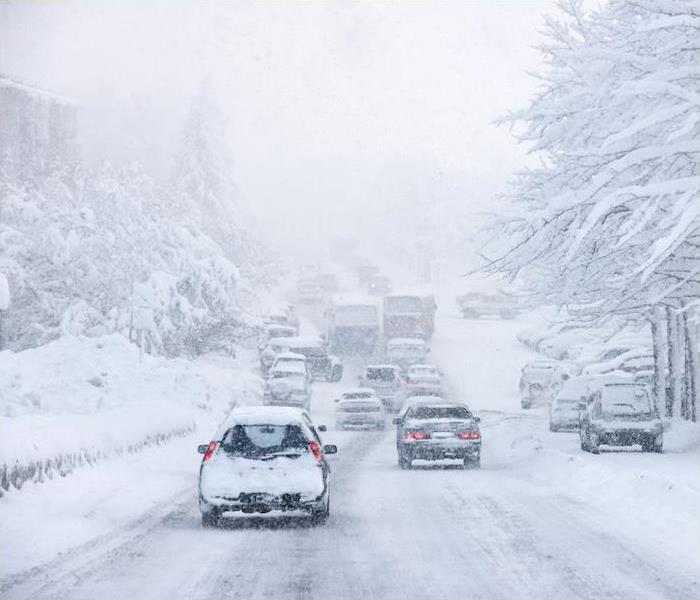 The winter season is almost upon us! SERVPRO of East Lansing/Haslett has your back with these helpful tips.
The winter season is almost upon us! SERVPRO of East Lansing/Haslett has your back with these helpful tips.
No matter how long you live in Michigan, winter storms can still throw you for a huge loop. Our weather can bring us anything from extremely cold temperatures to blizzard conditions, leaving roads wet and slippery and our homes at risk for damage.
Regardless of what the winter weather does bring, when you are prepared, you can prevent a disaster and keep your family safe. Getting your home ready means you can deal with any winter storm that comes your way.
Preparing Your HomeAhead of a big storm, you want to be prepared to stay indoors and off the road for 24 to 48 hours. Blizzard conditions, ice and freezing temps can make traveling dangerous until plows have been through and roads are salted again. A big enough storm could have you indoors for even longer.
Check your weather radio and make sure it is working well. Check on your other emergency supplies in order to be prepared for the potential that power could be knocked out long-term. You want to ensure you are ready to stay safe and warm.
Make sure you have plenty of flashlights, batteries and first-aid supplies. You should also gather up blankets, sleeping bags and warm layers in order to keep everyone cozy. If you have a fireplace, stock up on wood or take a look at your pilot light to make sure it is ready to go. Check your generator if you have one as well, and make sure you follow all the safety guidelines to prevent potential disasters.
Consider making alternate plans in case you need to leave home. Talk with your family and friends and determine the safest options for everyone. You can also keep an eye on local news stations to watch for warming stations that open up in order to warm up during the day.
Taking Care of Your Home After the StormOnce the bulk of the storm has passed and things begin to clear up, head outside to assess your home. Even if you came through the storm without any damage, you will need to do a couple of things to ensure your home stays safe as the dust settles.
If you don’t already have one, get a roof rake so that you can light the snow load after a big storm. Not only does this decrease the possibility of a roof collapse from the weight of the snow, but it can also lower the possibility of ice dams. Snow can weigh nearly 20 pounds per cubic foot, so the more you can scrape off, the safer things will stay.
Once you have taken care of your roof, pay close attention to your gutters. Not only do you want to make sure they are blockage-free along the roofline, but you should also walk the perimeter of your home and make sure everything is still connected. Remove any ice that has formed at the gutter exits as well. Check the vents around your home to make sure they are free of blockages, too. Remove snow and ice so that you are not at risk for carbon monoxide buildup inside your home.
How We Can HelpWhen you head out after the storm to assess your home, if you do find damage, make sure to call us right away. We are available around the clock and will get a team headed to your house in order to assess the situation and get things as secure as possible so that restorations can continue quickly.
Our goal is to get your home put back together exactly as it should be. We want you to be able to get back to enjoying the beauty that winters in Michigan can be.
Our team is always ready for anything! Contact us at SERVPRO of East Lansing/Haslett for a quick restoration after suffering damage from a winter storm.
Is Your East Lansing Team Ready for Severe Weather? | SERVPRO of East Lansing/Haslett
9/18/2023 (Permalink)
 If your home or business was damaged in a storm, call SERVPRO of East Lansing/Haslett to get you back in action.
If your home or business was damaged in a storm, call SERVPRO of East Lansing/Haslett to get you back in action.
Being ready for any challenge that is thrown your way is essential to staying afloat as a business owner. You have the responsibility of training your employees for anything that occurs in the workplace, including severe weather.
While it’s no doubt important to prepare for common workplace obstacles, you’ll also need to get ready for the possibility of nasty weather interrupting your workplace. If you’re not prepared, local weather threats can sweep through and shut your business down for good.
Keep your crew from reacting inappropriately in the middle of a disaster by using this guide to ensure your workplace is fully prepared.
Know Your RiskAs you begin creating a plan for your business, you’ll need to know what kind of weather hits our area the most. Every area experiences its own unique set of weather conditions, so knowing what could affect your business will help you avoid chaos.
East Lansing sees severe weather like tornadoes, thunderstorms, floods and snowstorms. These conditions make a huge impact on our area each year, causing detrimental damage and forcing businesses to shut their doors.
Figuring out your flood risk is a good place to start when researching what could affect your business. Other things like checking the weather before each work week and having advisory notifications on can help you warn your team before the weather worsens.
Make a Plan to CommunicateBeing able to communicate with your team will be crucial In the middle of a weather emergency. Nowadays, technology makes it easier than ever to communicate in the workplace.
Make sure everyone on your team is connected through the same system so they can receive real-time updates when severe weather strikes. This can help them gather any necessary supplies and prepare in an orderly manner.
Plan Your EvacuationIt can be scary to think about, but your team may end up needing to make a quick evacuation if severe weather gets too bad.
Let your crew know where to go when you need to evacuate and point out any exits. To ensure your employees know what to do when an evacuation is needed, run and drill and go over these areas.
During certain weather emergencies, an evacuation may not be safe; instead, you’ll need to shelter in place. Pick a safe area where everyone in your building can shelter until the storm blows over.
No matter how severe the weather gets, it’s important that your workplace stays calm! This will ensure everyone reacts appropriately if disaster strikes. Run through your escape plan, stay connected with your team and keep up to date with the local weather.
Don’t let extreme weather take control! If storms strike your business, SERVPRO can help you restore your losses.
Prepare Your Home for Storm Season | SERVPRO of East Lansing/Haslett
9/18/2023 (Permalink)
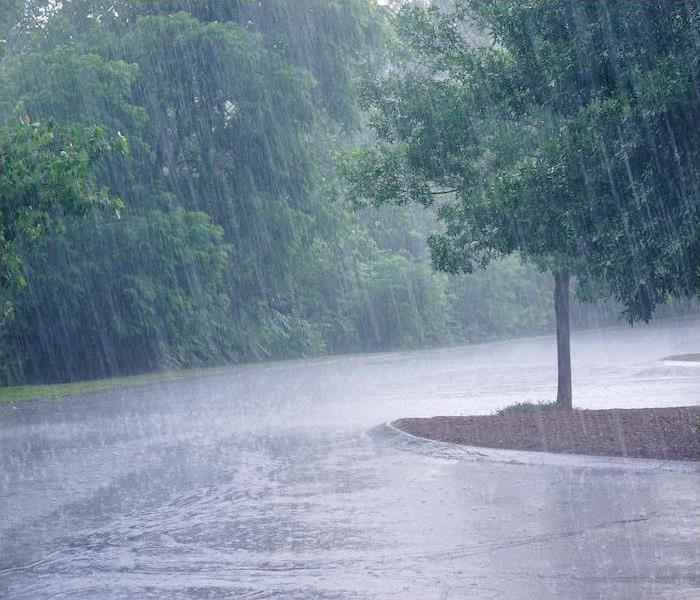 Have you been impacted by the unusual summer storm season? SERVPRO of East Lansing/Haslett has your back when you experience flood and water damage.
Have you been impacted by the unusual summer storm season? SERVPRO of East Lansing/Haslett has your back when you experience flood and water damage.
East Lansing is no stranger to rainfall and occasional storms. When it comes to keeping your home safe from these events, taking proactive measures is crucial.
Storms can bring strong winds, heavy rain, hail and floods, posing various risks that can lead to significant damages. Storm-proofing the exterior of your house is essential to prevent expensive repairs and safety risks.
Preparing for the Stormy SeasonProtecting your home from storms doesn’t have to be overwhelming. In fact, many storm-proofing measures can be integrated into your regular routines.
Strong winds and heavy rain can be a concern wherever you live. In order to reduce the possibility of flying objects breaking windows or water collecting in your basement, trim the trees close to your property, check your gutters frequently and eliminate loose debris. When storms are approaching, remember to secure your patio furniture or locate a secure storage facility.
Inspect your property for any gaps or deteriorated wood. Maintaining caulking around window and door frames is crucial to prevent potential leaks during heavy rain.
Regularly check your roof after each wind event and at least once every four months. Replace any missing or loose shingles promptly and be vigilant for openings around gutters, edges or chimney areas.
Getting Your Home ReadyWhile many storm preparations can be done without having to pay additional costs, you may also want to consider some upgrades to prepare for our area’s inclement weather.
Purchasing storm shutters can be a wise move, especially if your house is in a location that’s vulnerable to high winds. You can also increase protection by upgrading your windows to stronger materials that can endure harsh weather. Gutter guard installation can help you avoid clogs and significant water damage, which is especially important if you have a number of trees around your property.
To ensure that sheds and modular homes are secure during strong storms, think about adding additional bracing or structural tie-downs.
Maintain constant awareness of the weather by setting up numerous alert systems, and designate a safe area of your house where you can quickly evacuate during severe storms.
If your home has been damaged, SERVPRO® of East Lansing/Haslett is available 24⁄7 to respond and provide quality restoration.
What to Do When Storm Damage Strikes | SERVPRO of East Lansing/Haslett
9/18/2023 (Permalink)
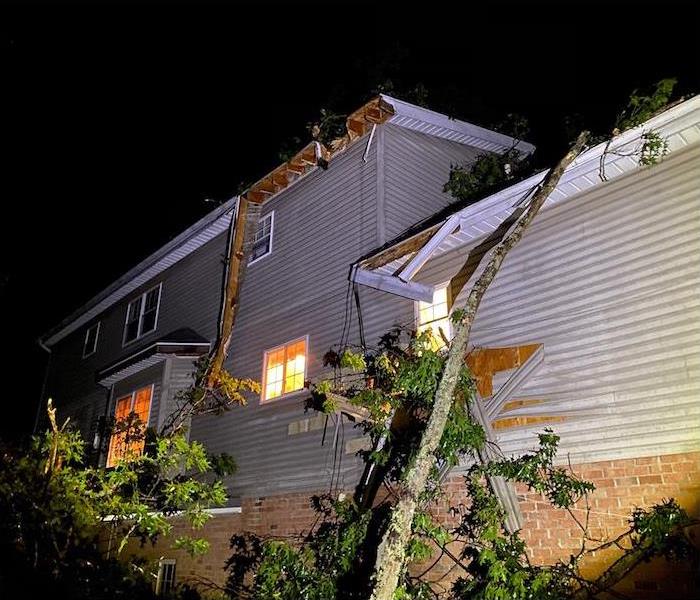 Summer storms affecting your property? Call SERVPRO of East Lansing/Haslett to restore your space in no time!
Summer storms affecting your property? Call SERVPRO of East Lansing/Haslett to restore your space in no time!
Has a storm ever blown through and left you amazed at the speed and power in which it happened? Even if you have time to prepare, storms can be stronger than anticipated and create damages you couldn’t have anticipated.
The weather in East Lansing is fairly moderate and cool, but that doesn’t mean we haven’t seen plenty of strong storms. The summer months can be particularly dangerous, with strong thunderstorms, high winds and even the occasional tornado all possible. In July, we even saw overnight storms that tore down trees after 70 mph winds blew through.
We know that preparing before a winter storm is crucial in order to ride things out safely, but the more we stay prepared year-round, the better the outcome will be when the weather turns severe. Knowing what to do after a storm is also important so that your recovery process is quick and easy.
If you find your home damaged after a storm, take a deep breath and make sure safety is your first priority. Then take action to start putting your life back together.
Immediately After the StormIn the time immediately after a storm has passed, it is crucial to stay vigilant of additional weather threats. Lightning, heavy rain or hail could be lingering, or another storm could be headed your way. Keep a way to receive weather alerts close and maintain a clear path back to your shelter should you need to move quickly to safety.
Give your loved ones a call to see if anyone needs assistance. If cell service isn’t available, texting may still work. If you haven’t already done so, make sure how you will communicate after a storm is clear to all of your family.
Go check on those in your immediate area. Don’t go into damaged buildings, but instead, look for a clear exit or remove debris from the road as you are able to allow emergency vehicles in.
Take pictures if you are able, and call SERVPRO® of East Lansing/Haslett. We are waiting for your call around the clock so that we can start your recovery right away.
As More Time PassesAs time moves on, the depth of your damage will become more evident. You need to continue to keep yourself and your family safe. Stay aware of your surroundings and watch for hazards like loose nails or boards. Keep your cell phone charged if you are able, or have some other way to get weather alerts around at all times in case another storm headed your way.
Preventing additional damages is the first priority in the recovery process. If your roof is damaged, it will need to be tarped, and any other parts of your home will need to be sealed. Our professionals will also tackle any standing water or parts of your property that need to be dried out. If your home is severely damaged, you may need to consider a safe place to stay while restoration proceeds.
SERVPRO works with your insurance company to make sure your claim process is as easy as your recovery. It is our goal to help you stay as calm as possible throughout the entire process. Storm damage can be utterly devastating, but with our crew on hand your home and your life can get back on track quickly.
If a storm leaves your home damaged, contact us for fast recovery. We’re here 24⁄7 when you need us.
Prepare Your Home for Storm Season | SERVPRO of East Lansing/Haslett
7/19/2023 (Permalink)
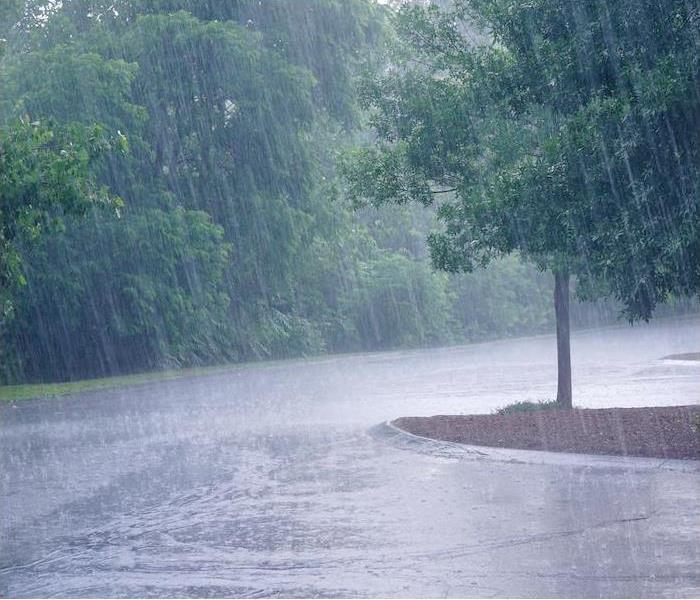 Have you been impacted by the unusual summer storm season? SERVPRO of East Lansing/Haslett has your back when you experience flood and water damage.
Have you been impacted by the unusual summer storm season? SERVPRO of East Lansing/Haslett has your back when you experience flood and water damage.
East Lansing is no stranger to rainfall and occasional storms. When it comes to keeping your home safe from these events, taking proactive measures is crucial.
Storms can bring strong winds, heavy rain, hail and floods, posing various risks that can lead to significant damages. Storm-proofing the exterior of your house is essential to prevent expensive repairs and safety risks.
Preparing for the Stormy SeasonProtecting your home from storms doesn’t have to be overwhelming. In fact, many storm-proofing measures can be integrated into your regular routines.
Strong winds and heavy rain can be a concern wherever you live. In order to reduce the possibility of flying objects breaking windows or water collecting in your basement, trim the trees close to your property, check your gutters frequently and eliminate loose debris. When storms are approaching, remember to secure your patio furniture or locate a secure storage facility.
Inspect your property for any gaps or deteriorated wood. Maintaining caulking around window and door frames is crucial to prevent potential leaks during heavy rain.
Regularly check your roof after each wind event and at least once every four months. Replace any missing or loose shingles promptly and be vigilant for openings around gutters, edges or chimney areas.
Getting Your Home ReadyWhile many storm preparations can be done without having to pay additional costs, you may also want to consider some upgrades to prepare for our area’s inclement weather.
Purchasing storm shutters can be a wise move, especially if your house is in a location that’s vulnerable to high winds. You can also increase protection by upgrading your windows to stronger materials that can endure harsh weather. Gutter guard installation can help you avoid clogs and significant water damage, which is especially important if you have a number of trees around your property.
To ensure that sheds and modular homes are secure during strong storms, think about adding additional bracing or structural tie-downs.
Maintain constant awareness of the weather by setting up numerous alert systems, and designate a safe area of your house where you can quickly evacuate during severe storms.
If your home has been damaged, SERVPRO of East Lansing/Haslett is available 24⁄7 to respond and provide quality restoration.
Is Your East Lansing Team Ready for Severe Weather? | SERVPRO of East Lansing/Haslett
7/14/2023 (Permalink)
 If your home or business was damaged in a storm, call SERVPRO of East Lansing/Haslett to get you back in action.
If your home or business was damaged in a storm, call SERVPRO of East Lansing/Haslett to get you back in action.
Being ready for any challenge that is thrown your way is essential to staying afloat as a business owner. You have the responsibility of training your employees for anything that occurs in the workplace, including severe weather.
While it’s no doubt important to prepare for common workplace obstacles, you’ll also need to get ready for the possibility of nasty weather interrupting your workplace. If you’re not prepared, local weather threats can sweep through and shut your business down for good.
Keep your crew from reacting inappropriately in the middle of a disaster by using this guide to ensure your workplace is fully prepared.
Know Your RiskAs you begin creating a plan for your business, you’ll need to know what kind of weather hits our area the most. Every area experiences its own unique set of weather conditions, so knowing what could affect your business will help you avoid chaos.
East Lansing sees severe weather like tornadoes, thunderstorms, floods and snowstorms. These conditions make a huge impact on our area each year, causing detrimental damage and forcing businesses to shut their doors.
Figuring out your flood risk is a good place to start when researching what could affect your business. Other things like checking the weather before each work week and having advisory notifications on can help you warn your team before the weather worsens.
Make a Plan to CommunicateBeing able to communicate with your team will be crucial In the middle of a weather emergency. Nowadays, technology makes it easier than ever to communicate in the workplace.
Make sure everyone on your team is connected through the same system so they can receive real-time updates when severe weather strikes. This can help them gather any necessary supplies and prepare in an orderly manner.
Plan Your EvacuationIt can be scary to think about, but your team may end up needing to make a quick evacuation if severe weather gets too bad.
Let your crew know where to go when you need to evacuate and point out any exits. To ensure your employees know what to do when an evacuation is needed, run and drill and go over these areas.
During certain weather emergencies, an evacuation may not be safe; instead, you’ll need to shelter in place. Pick a safe area where everyone in your building can shelter until the storm blows over.
No matter how severe the weather gets, it’s important that your workplace stays calm! This will ensure everyone reacts appropriately if disaster strikes. Run through your escape plan, stay connected with your team and keep up to date with the local weather.
Don’t let extreme weather take control! If storms strike your business, SERVPRO® can help you restore your losses.
Plan Ahead of Dangerous Wind Conditions | SERVPRO of East Lansing/Haslett
6/14/2023 (Permalink)
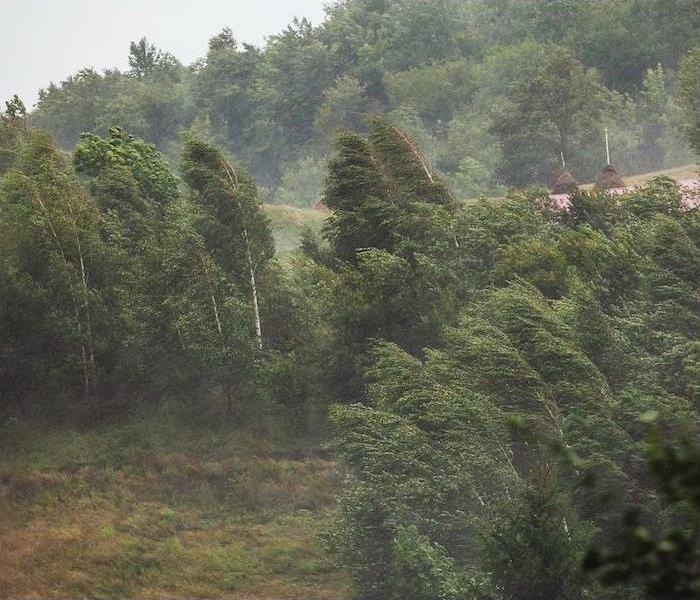 If you've suffered from storm-related damage to your home or business, make SERVPRO of East Lansing your first call.
If you've suffered from storm-related damage to your home or business, make SERVPRO of East Lansing your first call.
On a scorching day, a mild breeze can provide a revitalizing retreat from the oppressive heat. Though the wind is invisible, it is an ever-present force that we can depend on, even when it is not ideal.
However, when the wind intensifies and transforms into a powerful gust, it can cause widespread destruction, leaving homes with terrible damage. While strong winds are typically associated with severe storms, they can arise unexpectedly on clear days.
Familiarize yourself with the potential consequences of high winds and how they can jeopardize your property, and take appropriate measures to ensure the safety of your family and your home.
The Different Kinds of WindAbout half of all deadly wind events happen alongside severe thunderstorms, making them a hazard that is hard to avoid. Winds brought on by thunderstorms are known to cause much more destruction than tornadoes.
Debris can be dispersed across your yard, and structures can be severely damaged by thunderstorms’ winds, which can reach speeds of up to 60 miles per hour.
Straight-line winds, a form of thunderstorm wind, can be dangerously destructive, with speeds of up to 100 miles per hour. These winds are not related to rotation, unlike tornadoes, and can cause harm even in places where there is no precipitation.
The combination of various types of winds produced by tornadoes is responsible for their destructive power. East Lansing is vulnerable to tornadoes, which can cause considerable damage on occasion. Aside from tornadoes, strong winds caused by thunderstorms are another risk that residents and businesses in our area should be prepared for.
Wind Damage and PreventionSevere winds can be incredibly destructive, with downed trees, scattered debris and damaged power lines being some of the most common types of wind damage. Even an anchored mobile home is not immune to these effects when winds exceed 80 miles per hour.
Familiarizing yourself with the various types of weather alerts related to high winds and taking preventive measures to secure outdoor objects can go a long way in reducing the impact of wind damage.
Make sure your trees are well-maintained, and remove any dead or weak branches overhanging your home. Don’t forget to secure any loose objects in your yard that could become flying projectiles.
After the winds have died down, make sure to inspect your home for any signs of damage. Be sure to check your roof for problems such as misplaced shingles, and repair any damage before water leaks inside. Turn to our expert SERVPRO team, and we’ll get your home back to its pre-storm state before you know it.
Has your home been damaged by wind? Call us and get things cleaned up fast.
Weather Alerts Could Save Your Life During a Disaster | SERVPRO® of East Lansing/Haslett
7/12/2022 (Permalink)
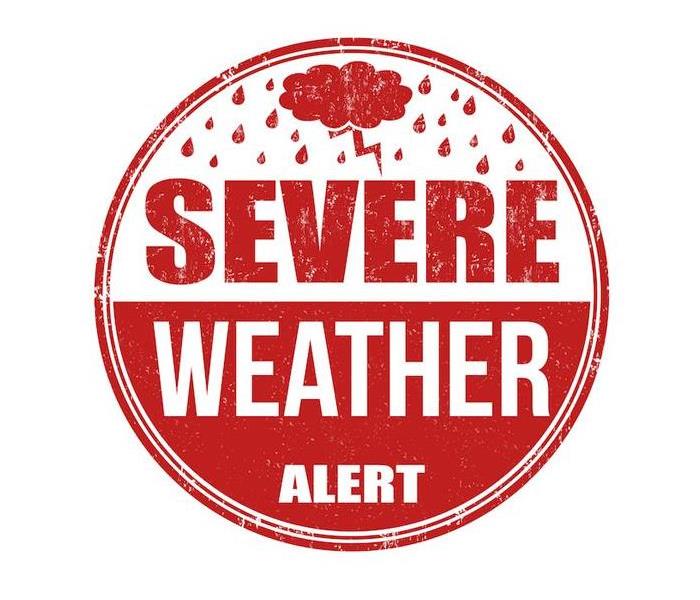 If you suspect any damage to your home from a recent storm, call SERVPRO of East Lansing/Haslett.
If you suspect any damage to your home from a recent storm, call SERVPRO of East Lansing/Haslett.
Our national weather system uses at least 42 different kinds of weather alerts, split between seven categories depending on the type of event. This is too much information for the average person to comprehend in daily life, much less if they’re sheltering from a dangerous storm.
By knowing the meaning of warnings and advisories that could be issued, you’ll be able to make better decisions during extreme weather. In addition, you can take steps to keep your home protected from storms.
A good base of knowledge about severe weather is good to have, but more importantly, we should be aware of the risks that affect our area most frequently.
How Alerts Are IssuedMost people aren’t aware of how alerts are issued. It begins with the weather forecast, a prediction about future weather patterns. However, multiple factors affect these forecasts, and a lot of data is gathered to measure the severity and characteristics of a storm.
The National Weather Service is our country’s primary organization for all forecasting and issuing potential warnings. Across our nation, there are six offices and hundreds of sub-offices that cover almost the entire landmass. Here in Michigan, we’re covered by the Central Region headquarters, which watches most of the northern USA.
The NWS employs multiple types of personnel to observe and analyze geographical, wind patterns and many other kinds of data. The types of instruments used to collect data will vary based on the kind of weather event, but they always focus on providing accurate forecasts for all Americans.
The Most Important Alerts to UnderstandThe first thing that everyone should know about severe weather is the meaning of a “watch” and a “warning.” These words are frequently used in all kinds of storms, some being tornadoes, flooding and thunderstorms.
A watch will cover large regions, like multiple counties or even states. These alerts are indicating that storms are moving your way, and could become dangerous in the coming hours.
A warning is typically only used to cover singular cities or counties, although hurricanes can bring warnings for entire coastlines. These are signs that danger is coming very soon, and you should take steps to be prepared for disaster.
You should be aware of the weather that we see here frequently, as this will allow you to prepare for the most common disasters. In Michigan, East Lansing specifically, we see more than 60 inches of snowfall and only have about 170 sunny days per year, so we see storms almost every other day.
Protecting Your Home During a StormBesides knowing your emergency alerts, you can make efforts to prepare your home and mitigate potential damage to your property from weather events.
Clearing your gutters and securing your outdoor furniture is a great place to start. Outdoor furniture is often lifted up by powerful winds and then thrown into the home’s walls, roof or windows.
When the storm is gone, you should take plenty of photos or videos of the damage that your home has suffered. Afterward, give us at SERVPRO of East Lansing/Haslett a call. We’re always ready to jump into action and help you get back on your feet.
Learn the weather most common in your area, and pay attention to weather alerts so you can be prepared for the dangers ahead.
Experienced storm damage to your home or property? Contact us today for a quick response!
What Makes Storm-Related Flash Floods So Dangerous | SERVPRO® of East Lansing/Haslett
7/11/2022 (Permalink)
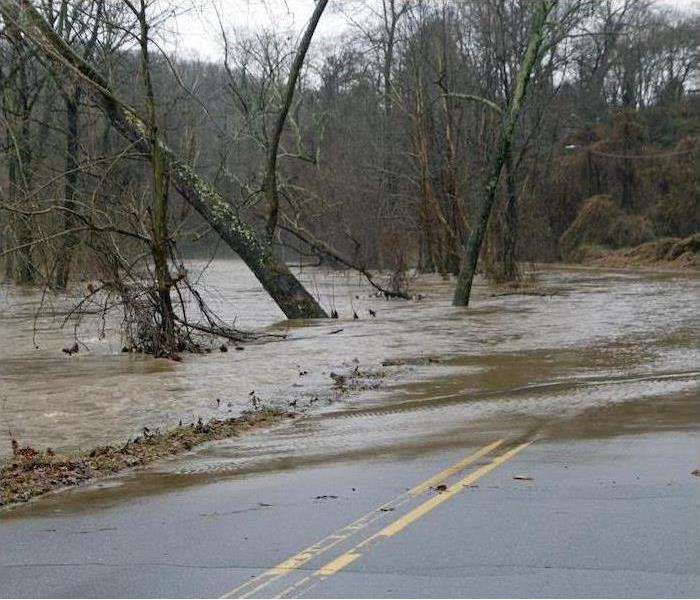 If your home or business has been damaged by a storm, call SERVPRO of East Lansing/Haslett today!
If your home or business has been damaged by a storm, call SERVPRO of East Lansing/Haslett today!
Severe weather can be dangerous in many different ways—between lightning strikes, high wind and hail, there are countless ways that storms can cause damage. However, many people are surprised to learn that floods are the most dangerous severe weather incident of all. Floods are second only to heat when it comes to weather-related fatalities in the United States, and flash floods present the biggest risk.
Any type of flooding can be quite dangerous, but when it comes to flash floods, their sudden onset in addition to their ability to impact any area creates a deadly combination. Additionally, because any body of water can overflow during heavy rains, flash floods can impact any area—that is why we encourage people to always be aware of their risks and the top safety tips.
What Makes a Flood a Flash Flood?
A traditional flood will slowly begin to rise, while a flash flood must occur within the first six hours after a storm, but they often happen in as few as three hours. Flash floods tend to be more common in urban areas due to the possibility of blocked storm drains and drainage systems, and they can occur even in areas that are not situated low enough to be a regular flood concern.
What Are the Flash Flood Alert Guidelines?
Because flash floods can come about with little notice, if there is a storm and heavy rain in your area, you should always stay alert to local weather alerts so you have as much notice as possible in case waters near you start to rise.
Officials will issue a flash flood watch for a general area to encourage heightened concern, but if things progress to a warning, you will want to quickly take the proper precautions. If a flash flood emergency is issued, move to higher ground as quickly as you can, as these are rare and deadly conditions.
What Can I Do to Reduce My Flash Flood Risk Level?
It is important to prioritize safety for any severe weather event, but flash floods should be especially revered. Knowing the rules for safety can keep you and your family much safer if the waters suddenly begin to rise:
- If rain is heavy for an extended period, tune into official weather warning channels.
- Make sure you have a clear safety plan in place and that your family knows how to execute it.
- If you come across floodwater, never attempt to cross it by car or on foot.
- Avoid coming into contact with floodwater, as it can hide electrical currents and contaminants.
- When evacuating, have alternate routes in mind in case yours is blocked by water.
If your home or business has been damaged due to a flood or other severe weather, you can depend on us.
Responding to a Storm Watch vs. a Storm Warning | SERVPRO® of East Lansing/Haslett
6/9/2022 (Permalink)
 If severe weather has damaged your home or business, call SERVPRO of East Lansing/Haslett today!
If severe weather has damaged your home or business, call SERVPRO of East Lansing/Haslett today!
Any time severe weather becomes a threat, it is important to be prepared for all the possibilities
it brings. Heavy rains, strong winds, hail, flash floods and tornado threats are all common during
bouts of severe weather, and all of these things can cause damage in addition to increasing the
risk of injury or fatalities.
If severe weather is possible, staying aware of local officials’ weather updates is key, as is
knowing how to respond to them. Understanding alert systems, such as watches, warnings and
emergency sirens for your area, can help you make smart decisions about how to respond and
stay safe when the weather turns nasty.
Understanding a Severe Weather Watch vs. a Severe Weather Warning
A severe weather watch will be issued when conditions are favorable for the severe weather
event to occur. For example, a flash flood watch may be issued during periods of heavy rain, while a tornado watch may be issued when conditions look like those that are often related to tornadoes forming.
A severe weather warning is issued when the event is actively happening—so if flooding is
reported, or if a tornado is spotted on radar or on the ground, a watch would be issued for these
events.
Reacting to a Severe Weather Watch vs. a Severe Weather Warning
Because a severe weather warning means that conditions are favorable but the event is not
actively occurring, a warning being issued is your sign to stay vigilant. Tune into local broadcasts for updates and stay close to a safe area in case you quickly need to take shelter from whatever event is at hand.
When a severe weather warning is issued, that means to seek safe shelter immediately. For a
tornado, this would mean to get to your emergency shelter area. For a flood, this would mean to move immediately to higher ground.
Because time is extremely limited in these situations, it is important that you do not wait until after a watch is issued to plan what you should do—instead, have your safety plan mapped out well in advance so you can quickly take cover when and if necessary.
If you experience damage from severe weather, we are the team you can count on for restoration. We are here 24/7 to respond quickly. Contact us today.
Have You Prepared a Storm Safety Procedure? | SERVPRO® of East Lansing/Haslett
6/6/2022 (Permalink)
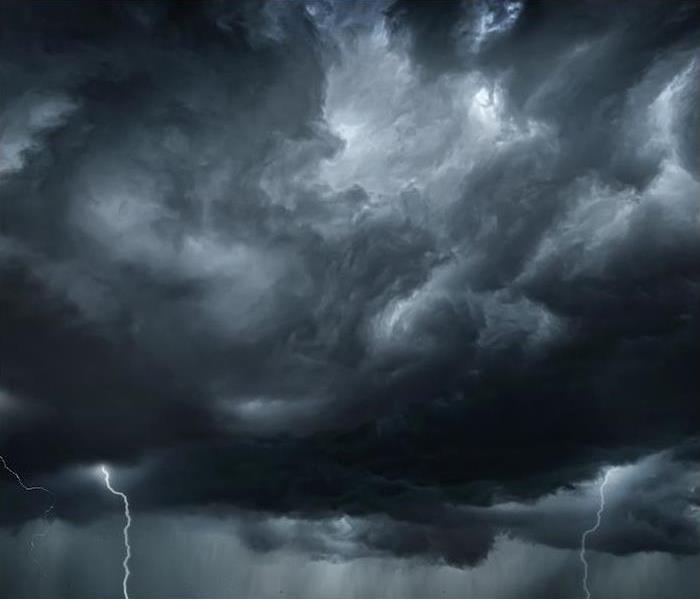 If you discover storm damage to your home or business, reach out to SERVPRO of East Lansing/Haslett right away.
If you discover storm damage to your home or business, reach out to SERVPRO of East Lansing/Haslett right away.
Winter storms can be rough here in Michigan, but we shouldn’t forget about the severe weather that comes with spring. These storms can cause events like lightning, rain, winds, flooding and hail, all capable of damaging your home or business. It’s crazy to think about, but there are around 100,000 thunderstorms throughout the United States every year, which is almost 2,000 per week!
In Michigan, we are closely acquainted with extreme weather, but we’re not afraid of it. Disasters like blizzards, nor’easters and even extreme flooding that cost our local community over $2 billion in repairs.
It would be nice to hit a button and get rid of any dangerous weather, but unfortunately, we can’t do that. However, you can— and should—prepare for storms by building an emergency kit, planning a good strategy for communication and taking action to be ready for when storms strike nearby.
Your Severe Weather Communication StrategyDuring emergencies, it’s crucial to have proper lines of communication with your loved ones and with your local government. Paying attention to the alerts in your area and knowing the difference between watches and warnings will ensure that you know what the next move is.
Second, it’s a smart idea to have multiple ways to receive weather alerts from officials. Television works great, but storms often knock out the signal, and cellphones always seem to run out of battery right when you need it most. An NOAA weather radio with spare batteries close by is your best bet to stay informed.
Lastly, developing a thorough communication strategy for your family members is key. This lets you stay in touch with loved ones and eases your mind by knowing that they’re safe. For the people in the house, having a specified location to shelter is also important—pick a spot that’s away from any windows like a large closet.
Your Severe Weather Emergency KitThe term emergency kit seems complex, but it can be simplified by thinking about what you and your family members will need for 72 hours or more of sheltering in place. These kits typically include nonperishable food, a lot of water, working flashlights, extra batteries and first-aid supplies.
These kits should be kept in your designated safe room so that you can access them when you take shelter. By taking this extra step, you will be more prepared for the potential disasters that come from storms.
Your Severe Weather Aftermath ChecklistWhen you have received the all-clear and it’s safe to leave your safe room, there are a few extra steps in being prepared for severe weather. Addressing your home’s condition comes first, and you need to do a check for property damage.
If you uncover damage during your property check, you can always call us day or night. At SERVPRO of East Lansing/ Haslett, we pride ourselves on being restoration professionals with 24/7 availability to come to your rescue. So when damage happens, reach out to us and have your home or business back to preloss condition as soon as possible.
Finally, after assessing your home for damage, it’s always good to go through your safety plan and look for ways to improve. Explore where things went wrong, or what things went right, and build on that for the next time you face extreme weather. Taking these steps and calling your local experts can help you stay safe and keep your home or business in working order
If you discover storm damage to your home or business, you can count on SERVPRO to handle the restoration. We’re here 24/7 to spring into action—get in touch with us today.
Storm Watches, Storm Warnings & Other Safety Tips to Note | SERVPRO® of East Lansing/Haslett
5/25/2022 (Permalink)
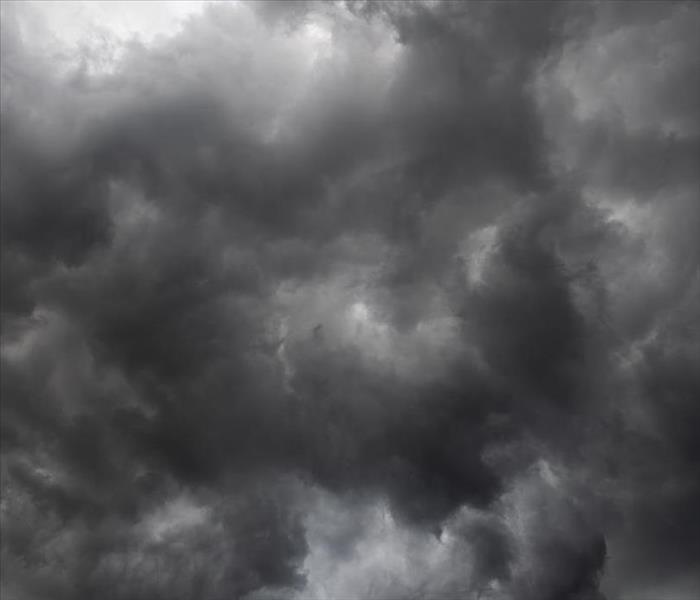 Call SERVPRO of East Lansing/Haslett today!
Call SERVPRO of East Lansing/Haslett today!
All too often, severe weather is underestimated. Because thunderstorms often move through areas without causing significant damage, there is a tendency for people to assume that every storm will be minor—unfortunately, this could not be further from the truth.
Storms are powerful and complicated things, and it is important to remember that staying safe is so important.
Safety from severe weather is not something to be taken lightly, and it is much easier to stay safe if you know the proper terminology and what it means for you. Below, we will be looking at the difference between severe weather watches and warnings, and including a few key safety tips so you and your household can stay protected.
The Difference Between Storm Watches and Warnings
What Is a Watch? When a watch is issued, be it for a severe thunderstorm, flood or tornado, that means that conditions for these weather events are favorable—as in, there is a strong chance that they could occur. However, when a watch is issued, the weather event is not actively occurring, and is only possible.
What Is a Warning? When a warning is issued, that means that the weather conditions in question are actively occurring or have become imminent. This means a severe storm has developed, a tornado has been spotted or flooding is happening somewhere within the area, and those in the warning district should quickly get themselves to safety.
Other Safety Tips for Severe Weather
In addition to knowing the difference between a watch and a warning, it is also wise to take note of other safety tips for protecting yourself and your loved ones in the event of severe weather.
- Know where to shelter, whether at home or out and about, if severe weather becomes imminent.
- Keep a weather radio on hand so you can get updates even if cell phone networks fail.
- Know where your local shelters are in case you must evacuate your home.
- Keep a well-stocked emergency kit in your at-home sheltering area so there is no need to leave until it is safe to do so.
If you have storm damage to your home, you can count on us to help. We are here 24/7 to provide storm restoration services—contact us today to learn more.
Weather Hazards in Michigan as Spring Approaches | SERVPRO® of East Lansing/Haslett
5/24/2022 (Permalink)
 SERVPRO of East Lansing/Haslett wants to keep your home or business safe this spring!
SERVPRO of East Lansing/Haslett wants to keep your home or business safe this spring!
In terms of total land area, the United States is second only to Russia and Canada (though China is larger if all outlying US territories are excluded). It’s a very large and diverse country.
Because of its sheer vastness, seasonal weather does not follow a one-size-fits-all pattern across the whole country. Throughout the year, distinct regions of the country experience a variety of diverse weather patterns, resulting in a range of weather threats.
With the arrival of spring, warm and cold air masses collide throughout the nation, resulting in extreme weather occurrences. Let’s take a look at what we may expect in various parts of the nation, as well as what we should keep in mind here in Michigan.
Severe rain drenches the Pacific Northwest in the spring, which may result in flooding and water damage to homes. At higher elevations, snow will continue to fall, and the ensuing melting and runoff will create its own concerns.
The Upper Midwest, including Michigan, and all through the Northeast have the longest winters (as you’re surely aware), with frigid weather lasting throughout the season. Michigan has also seen an increase in rain and snowfall in recent years.
The frequency and intensity of extreme precipitation are projected to continue to rise, potentially increasing the frequency and intensity of floods throughout spring. Extreme cold and the threat of snowstorms and blizzards may be expected as far northeast as Maine all the way over to the Dakotas until late spring or early summer, when temperatures begin to rise again.
The southern West Coast, on the other hand, will experience the opposite, with severe heat waves possibly risking lives and property. Additionally, tsunamis caused by tectonic activity can be expected throughout the South Pacific, including Hawaii.
Windstorms, derechos and the risk of wildfires will be major threats across the heartland, from Iowa to Texas. When the winds are high and the weather is dry, wildfires may spread quickly. Accordingly, Tornado Alley, which has a high tornado frequency, is included in this zone.
Tornadoes and severe thunderstorms in landlocked areas, as well as catastrophic rip currents and hurricanes on the coast late into spring, are all possible in the Southeast region.
Extreme weather poses a significant risk to everybody in the United States, regardless of location. Yours may be different from that of a relative a few states away, but being prepared is always a smart idea.
If extreme weather leaves you with damage from water, fire or other elements, help is a click away. Contact SERVPRO for fast, expert recovery.
What Makes Storm-Related Flash Floods So Dangerous | SERVPRO® of East Lansing/Haslett
12/14/2020 (Permalink)
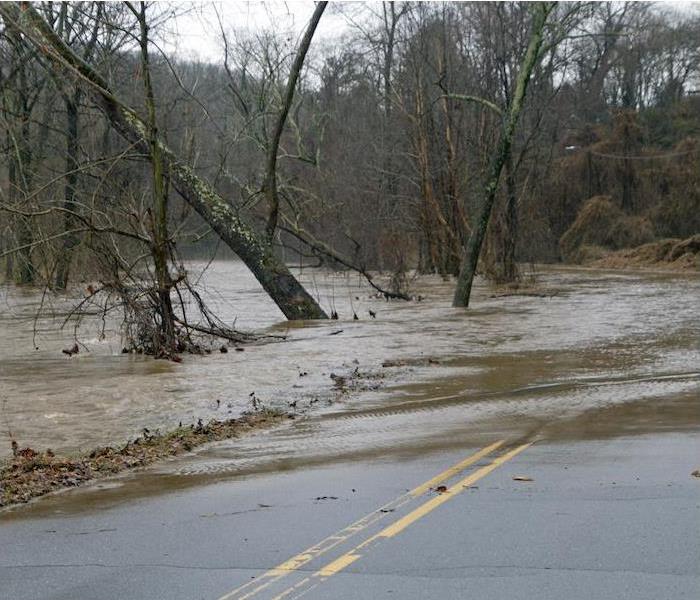 If your home is damaged due to a storm, SERVPRO of East Lansing / Haslett is here to help. We will get the job done right, contact us today.
If your home is damaged due to a storm, SERVPRO of East Lansing / Haslett is here to help. We will get the job done right, contact us today.
Severe weather can be dangerous in many different ways—between lightning strikes, high wind and hail, there are countless ways that storms can cause damage. However, many people are surprised to learn that floods are the most dangerous severe weather incident of all. Floods are second only to heat when it comes to weather-related fatalities in the United States, and flash floods present the biggest risk.
Any type of flooding can be quite dangerous, but when it comes to flash floods, their sudden onset in addition to their ability to impact any area creates a deadly combination. Additionally, because any body of water can overflow during heavy rains, flash floods can impact any area—that is why we encourage people to always be aware of their risks and the top safety tips.
What Makes a Flood a Flash Flood?
A traditional flood will slowly begin to rise, while a flash flood must occur within the first six hours after a storm, but they often happen in as few as three hours. Flash floods tend to be more common in urban areas due to the possibility of blocked storm drains and drainage systems, and they can occur even in areas that are not situated low enough to be a regular flood concern.
What Are the Flash Flood Alert Guidelines?
Because flash floods can come about with little notice, if there is a storm and heavy rain in your area, you should always stay alert to local weather alerts so you have as much notice as possible in case waters near you start to rise.
Officials will issue a flash flood watch for a general area to encourage heightened concern, but if things progress to a warning, you will want to quickly take the proper precautions. If a flash flood emergency is issued, move to higher ground as quickly as you can, as these are rare and deadly conditions.
What Can I Do to Reduce My Flash Flood Risk Level?
It is important to prioritize safety for any severe weather event, but flash floods should be especially revered. Knowing the rules for safety can keep you and your family much safer if the waters suddenly begin to rise:
- If rain is heavy for an extended period, tune into official weather warning channels.
- Make sure you have a clear safety plan in place and that your family knows how to execute it.
- If you come across floodwater, never attempt to cross it by car or on foot.
- Avoid coming into contact with floodwater, as it can hide electrical currents and contaminants.
- When evacuating, have alternate routes in mind in case yours is blocked by water.
If your home or business has been damaged due to a flood or other severe weather, you can depend on us.
When Storms or Floods Hit East Lansing/Haslett, SERVPRO is Ready!
10/3/2018 (Permalink)
 Our highly trained crews are ready to respond 24/7 to storm or flood damage in East Lansing/Haslett!
Our highly trained crews are ready to respond 24/7 to storm or flood damage in East Lansing/Haslett!
SERVPRO of East Lansing/Haslett specializes in storm and flood damage restoration. Our crews are highly trained and we use specialized equipment to restore your property to its pre-storm condition.
Faster Response
Since we are locally owned and operated, we are able to respond quicker with the right resources, which is extremely important. A fast response lessens the damage, limits further damage, and reduces the restoration cost.
Resources to Handle Floods and Storms
When storms hit the East Lansing/Haslett area, we can scale our resources to handle a large storm or flooding disaster. We can access equipment and personnel from a network of 1,650 Franchises across the country and elite Disaster Recovery Teams that are strategically located throughout the United States.
Have Storm or Flood Damage? Call Us Today 517-999-0789
Are you prepared for a power outage?
5/29/2018 (Permalink)
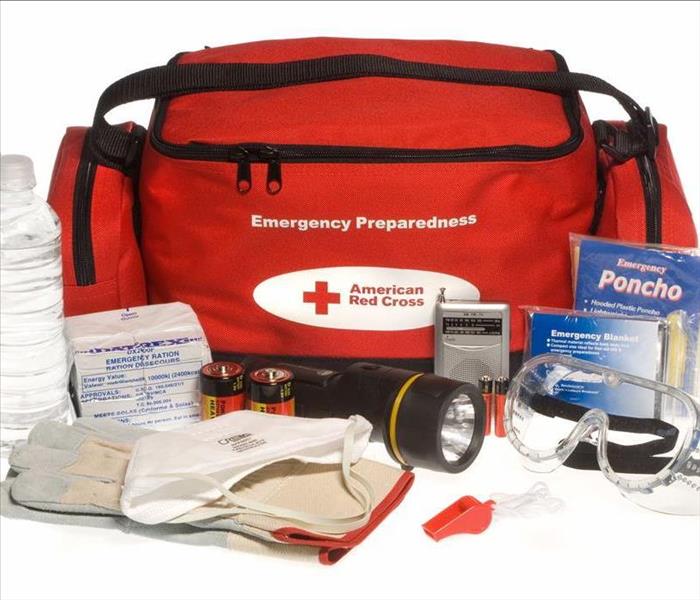 Keep your family safe with an emergency preparedness kit!
Keep your family safe with an emergency preparedness kit!
Be prepared for a power outage by keeping necessary items centrally located in your home. Take the time to ensure that everyone in your family is aware of the "kit." Periodically check your kit to see that batteries operate properly. The following is a list of items that are suggested to keep on hand:
1. Flashlights for each family member
2. Battery-operated radio and clock
3. Extra batteries
4. Containers of bottled water
5. Canned, freeze-dried or dehydrated food, powdered milk, baby supplies for infants
6. Non-electric can opener
7. List of important phone numbers
8. First-aid kit
Following a disaster, there may be power outages that could last for several days. Stock canned foods, dry mixes and other staples that do not require refrigeration, cooking, water or special preparation. Be sure to include a manual can opener and eating utensils. The following items are suggested when selecting emergency food supplies. You may already have many of these on hand.
•Store at least a three-day supply of non-perishable food.
•Choose foods your family will eat.
•Remember any special dietary needs.
•Avoid foods that will make you thirsty.
•Choose salt-free crackers, whole grain cereals and canned foods with high liquid content.
•Ready-to-eat canned meats, fruits, vegetables and a can opener
•Protein or fruit bars
•Dry cereal or granola
•Peanut butter
•Dried fruit
•Nuts
•Crackers
•Canned juices
•Non-perishable pasteurized milk
•High energy foods
•Vitamins
•Food for infants
•Comfort/stress foods
These and many other helpful tips are available at https://www.ready.gov/power-outages. When bad weather strikes the East Lansing/Haslett area, knowing what to do until SERVPRO of East Lansing/Haslett arrives will make a difference.
Call us directly at 517-999-0789.
Our Highly Trained Restoration Specialists can restore your East Lansing Home
5/18/2018 (Permalink)
SERVPRO of East Lansing/Haslett is an IICRC firm. The Institute of Inspection, Cleaning and Restoration Certification (IICRC) creates the standards for the restoration industry and provides training and certification to restoration companies. IICRC Certified Firms have the right to display the IICRC Certified Logo.
IICRC Certified Firms must
• Present accurate information to consumers and conduct business with honesty and integrity.
• Require a technician on all jobs who has been formally trained and passed all required tests.
• Require a continuing education program to keep technicians up-to-date on the latest changes in the industry.
• Maintain liability insurance to protect all parties in the event of an accident.
• Maintain a written complaint policy and agree to Better Business Bureau or similar arbitration to resolve disputes, and accept the conclusions and recommendations of arbitration.
The IICRC Develops The Standards For The Restoration Industry
The IICRC has been the driving force in establishing the main industry standards and reference guides for professional carpet cleaning, water damage restoration and mold remediation. These IICRC standards take years to develop and require the coordination of experts in the field: manufacturers, industry organizations, insurance professionals, training schools, contractors, and public health professionals.
Every five years, the standards are reviewed and updated. The water damage restoration field changes rapidly with advancements in technology and science, and therefore the standards must evolve to keep pace.
About SERVPRO of East Lansing/Haslett
SERVPRO of East Lansing/Haslett specializes in the cleanup and restoration of residential and commercial property after a fire, smoke, water or storm damage event. Our staff is highly trained in property damage restoration and we are an IICRC Certified Firm. We believe in continuous training: from initial and ongoing training at SERVPRO’s corporate training facility to regular IICRC-industry certification, rest assured our staff is equipped with the knowledge to restore your property.
February Floods
5/8/2018 (Permalink)
 The basement of an Okemos home on the Red Cedar, 5 days after flooding began.
The basement of an Okemos home on the Red Cedar, 5 days after flooding began.
For many people, snagging a piece of waterfront property can be a dream come true. But when accumulated snow melts, or heavy rains ensue, that dream can turn into a nightmare.
In February, Mid-Michigan experienced some of the worst flooding in recent history. The Red Cedar's flood stage is 7 feet, and peaked at 10.3 feet; the Grand River's flood stage is 11 feet, and it peaked at 14.6 feet. The Lansing flood of 1975 reached levels of 12 feet.
There are over 1,700 SERVPRO franchises nationwide, as well as a Disaster Recovery Team and many franchises who participate in Storm Team. SERVPRO of East Lansing/Haslett has had the opportunity to participate in disasters around Michigan and in Texas during the devastating Hurricane Harvey aftermath. During the Lansing flood, franchises came to help from Tennessee, Ohio, Minnesota and Oklahoma.
Have Storm or Flood Damage? Call Us Today - 517-999-0789
Staying Safe During a Winter Storm
1/24/2018 (Permalink)
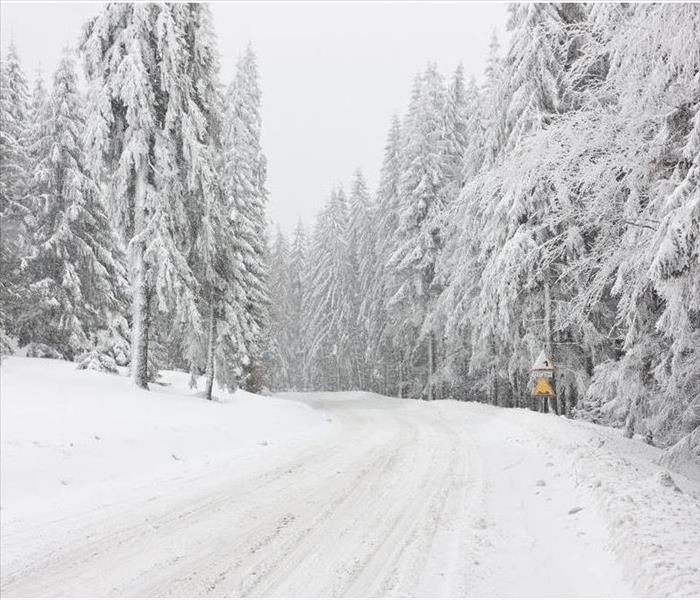 While beautiful, snow covered landscapes can be treacherous.
While beautiful, snow covered landscapes can be treacherous.
Although the deep freeze has passed, Michigan's unpredictable winter could throw a few more weeks of frigid temperatures our way. Following these helpful tips from the Red Cross can help keep you, your family, friends, and neighbors safe during a winter storm.
- Stay indoors and wear warm clothes. Layers of loose-fitting, lightweight, warm clothing will keep you warmer than a bulky sweater. If you feel too warm, remove layers to avoid sweating; if you feel chilled, add layers.
- Eat regularly. Food provides the body with energy for producing its own heat.
- Keep the body replenished with fluids to prevent dehydration. Drink liquids such as warm broth or juice. Avoid caffeine and alcohol. Caffeine, a stimulant, accelerates the symptoms of hypothermia. Alcohol, such as brandy, is a depressant and hastens the effects of cold on the body. Alcohol also slows circulation and can make you less aware of the effects of cold. Both caffeine and alcohol can cause dehydration.
- Bring your companion animals inside before the storm begins.
- Move other animals to sheltered areas with a supply of non-frozen water. Most animal deaths in winter storms are caused by dehydration.
- Check on relatives, neighbors, and friends, particularly if they are elderly or if they live alone.
If you must go outside, protect yourself from winter storm hazards:
- Wear layered clothing, mittens or gloves, and a hat. Outer garments should be tightly woven and water repellent. Mittens or gloves and a hat will prevent the loss of body heat.
- Cover your mouth to protect your lungs from severely cold air. Avoid taking deep breaths; minimize talking.
- Watch for signs of hypothermia and frostbite.
- Keep dry. Change wet clothing frequently to prevent a loss of body heat. Wet clothing loses much of its insulating value and transmits heat rapidly away from the body.
- Stretch before you go out. If you go out to shovel snow, do a few stretching exercises to warm up your body. This will reduce your chances of muscle injury.
- Avoid overexertion, such as shoveling heavy snow, pushing a vehicle, or walking in deep snow. The strain from the cold and the hard labor may cause a heart attack. Sweating could lead to a chill and hypothermia.
- Walk carefully on snowy, icy sidewalks. Slips and falls occur frequently in winter weather, resulting in painful and sometimes disabling injuries.
- If you must go out during a winter storm, use public transportation if possible. About 70 percent of winter deaths related to ice and snow occur in automobiles.
Prepare Your Mid-Michigan Home for a Winter Storm
11/14/2017 (Permalink)
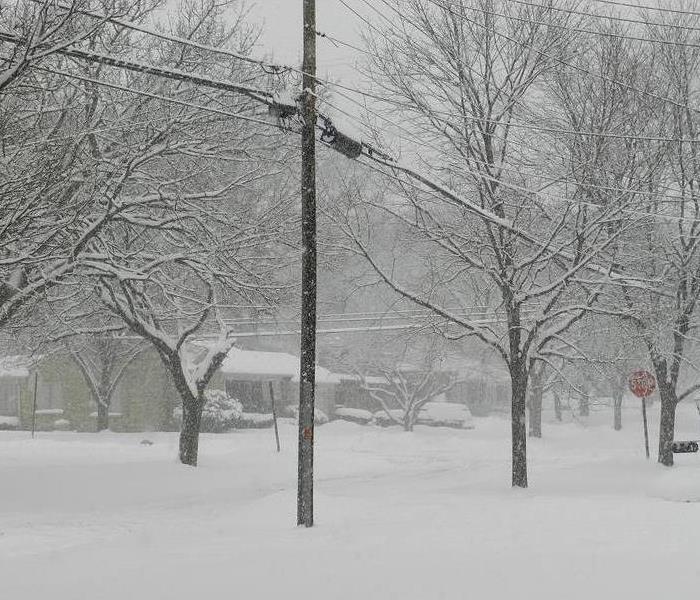 Prepare your home and family for Michigan's upcoming winter season!
Prepare your home and family for Michigan's upcoming winter season!
Michigan is no stranger to deadly winter storms - take the time this fall to prepare your home and family for this year's winter season!
Trim or Remove Trees
Trees are responsible for the majority of damage to homes and personal property during winter storms. Your homeowner’s insurance may not protect you in the event of fallen limbs or trees. According to insurance company Allstate, your homeowner’s insurance probably will not cover a fallen tree if the tree exhibited prior signs of rot or instability.
- Trimming: Trimming is far less expensive than full removal. Crews can thin out the branches to reduce the “sail effect” when those high winter winds blow. Trimming can also can balance out the tree’s load and keep one side from being heavier than the other, a condition that may topple the tree.
- Removing: Tree removal can entail a significant cost, especially in dense, metro areas where mobility is limited. The average cost to remove a large tree hovers in the $1,500 range, not including debris removal. Many communities require that you apply for a tree removal permit or at least put in a written notification. In many cases, the permit or notice must be accompanied by an arborist’s report stating that removal is required.
Check Roof and Flashing Stability
High winds can loosen roof shingles. Walk your roof and inspect it carefully. Shingles that are obviously loose should be replaced by a qualified roofer.
The condition of the flashing – the metal sleeves around the chimney and other roof protrusions – is more difficult to visually determine. Have a contractor or roofer inspect these areas.
Promote Drainage Away from House
When storms hit, massive amounts of water are directed at your house over a short period of time. Re-grade the soil around your house so it declines away from the foundation.
Clean and Repair Gutters and Downspouts
One source of water damage to foundations and basements is downspouts that force water straight into the ground. This can be easily and cheaply fixed by adding plastic downspout drainage lines that deposit the water away from the house. Fix or replace gutters in the summer. Clean gutters in the early fall, as soon as all the leaves are off the trees.
Purchase Ice Melt
In areas prone to freezing weather, walkways and driveways can become dangerously icy. Purchase ice melt in early fall (it may not be in stock in stores earlier than that). Calcium chloride is better than rock salt because it is less damaging to hardscaping and surrounding plants.
Remove Air Conditioners
By the end of summer, window unit air conditioners are no longer needed. A/C units are weak points for water intrusion. Even if there is a tight seal between the unit and the window, water can still enter through the back of the unit. Remove them and stow them away.
Remove Screens and Install Storm Windows
Depending on your climate, you can likely keep the windows open for a month or two past summer’s end. Eventually, though, it is good practice to remove the screens, wash them down, and store them until the following summer. Exterior retrofit storm windows can protect your windows against light debris impact and wind-blown rain, snow, and sleet.
Clean Chimneys for Wood-burning Fireplaces
Wood-burning fireplaces build up creosote, an oily black substance that can cause chimneys to internally ignite. Hiring a chimney sweep is the most effective way to rid your flue of creosote.
However, the Chimney Safety Institute of America (CSIA) endorses one product, Joseph Enterprise’s Creosote Sweeping Log, as being acceptable for do-it-yourself creosote cleaning.
Prepare Your Home’s Interior and Yourself
Dealing with exterior issues during the summer, when the weather is fair, gives you more time and leeway to tackle interior areas as winter approaches.
Tune-Up Your Heating System
Bringing in a technician to conduct a furnace “tune-up” is like your biannual dentist’s visit for teeth cleaning: you can miss it sometimes, but it is highly recommended that you do every year.
The greatest value in doing the tune-up before winter storms is that you can accomplish it on your own terms. If you wait until your furnace dies during a storm, you will be at the mercy of overtasked HVAC companies, their tight schedules, and their often-inflated pricing.
Learn How to Shut Off the Water Main and Gas
Quick – Do you know where your water main and gas shut-off valves are located? If you cannot answer this question off the top of your head, you need to find out now.
Water main valves are typically located within the house on the perimeter, facing the street. Gas valves are located outside the house near the gas meter. Most gas and water shut-off valves require a special tool that costs less than $15.
Install Emergency Lighting
Emergency lighting is your protection against fumbling around in the dark when the power goes out. Available for less than $20, these lights stay plugged into outlets so they are always charging. When power to the outlet is cut off, they automatically turn on.
Create a Family Emergency Plan
Creating a family emergency plan is as simple as printing and filling out a form that is available at the FEMA website.
This plan lists phone numbers, addresses, and medical information for all family members. Because both power and cell phone reception can go down in storms, it is valuable to have all this information available in hard-copy form.
Tips courtesy of fix.com
Hurricane Harvey Restoration Work
10/4/2017 (Permalink)
 An aerial view of Katy, TX after Hurricane Harvey.
An aerial view of Katy, TX after Hurricane Harvey.
In the days following the horror that was Hurricane Harvey, SERVPRO of East Lansing/Haslett was assigned to the SERVPRO Storm Team to help with restoration in the Houston area after the massive flooding. Our franchise owner, Bert, and four technicians headed down to Texas to do what they could to restore homes devastated by the storm.
SERVPRO of East Lansing/Haslett was assigned mainly to the areas of Tomball and Katy, which are north and northwest of Houston. The homes in these areas had experienced indoor flooding anywhere from 1' to 4' high, and the water would take a few days to a week to recede. Even after the water had gone down in the homes, many streets were still flooded at least 2' high up to nearly 4', preventing service vehicles from getting through.
Due to the contamination in the flood waters, anything the water touched would be deemed non-salvageable. Walls, cabinets, furniture, appliances, electronics - everything was lost. This also meant a lot of demolition and repair. Our small crew worked tirelessly tearing out drywall and flooring, and setting equipment to get the homes dried out in an effort to prevent any mold from forming, as well as to get started with repairs.
Our franchise is extremely grateful to be a part of the SERVPRO family, and to be able to take part in opportunities such as this. We've learned a lot about what it takes to come back from a natural catastrophe and are looking forward to continually serving our community.
Have Storm or Flood Damage? Call Us Today 517-999-0789
Preparing for a Tornado
6/1/2017 (Permalink)
 Tornadoes are nature's most violent storms.
Tornadoes are nature's most violent storms.
Warmer seasons can bring about destructive tornadoes around mid-Michigan. Peak tornado season for the northern states is late spring through early summer, and most commonly occur between 3:00pm and 9:00pm, but can strike anytime. Tornadoes can develop quickly and without warning, so keeping your home and family prepared for storms and power outages is essential to ensuring everyone remains safe during unpredictable weather.
During storms, keep an eye out for skies turning dark and greenish, watch for large hail, low-lying clouds, and loud roars similar to a freight train. These are danger signs a tornado may be approaching and you should seek shelter immediately.
If you are under a tornado warning and in a structure, get to the lowest level of the building or home. If you are too far from the lowest level to get there in time, go to a small interior room or hallway. Manufactured and mobile homes offer little protection from tornadoes - getting out immediately and to a pre-defined location such as a storm shelter or nearby building. When you're outside and a tornado warning occurs, take cover in a stationary vehicle, covering your head with your arms, a blanket or a coat. If you cannot get inside anywhere, lie in an area noticeably lower than the roadway. Never take cover under an overpass or a bridge!
Be sure to build an emergency preparedness kit in case you're caught in a storm or power outage. Visit ready.gov/kit to see what essentials you should have in your kit. While building your kit, it's a good idea to gather the family and plan a meeting spot in case anyone gets separated during a storm.
Wind, rain and hail can do a lot of damage to your home during a storm. If you find yourself needing emergency tarping or boarding up, call SERVPRO of East Lansing/Haslett at 517-999-0789. We're here to help.
When Storms or Floods Hit East Lansing/Haslett, SERVPRO is Ready!
5/24/2017 (Permalink)
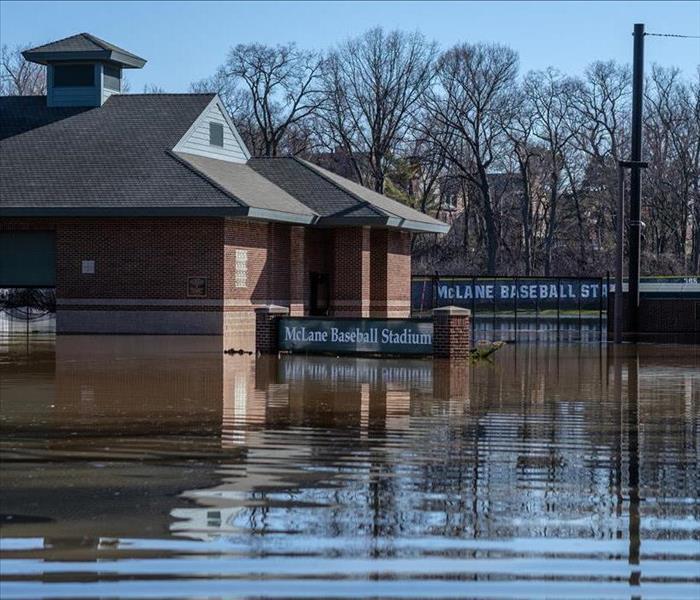 Our highly trained crews are ready to respond 24/7 to storm or flood damage in East Lansing/Haslett!
Our highly trained crews are ready to respond 24/7 to storm or flood damage in East Lansing/Haslett!
SERVPRO of East Lansing/Haslett specializes in storm and flood damage restoration. Our crews are highly trained and we use specialized equipment to restore your property to its pre-storm condition.
Faster Response
Since we are locally owned and operated, we are able to respond quicker with the right resources, which is extremely important. A fast response lessens the damage, limits further damage, and reduces the restoration cost.
Resources to Handle Floods and Storms
When storms hit the East Lansing/Haslett area, we can scale our resources to handle a large storm or flooding disaster. We can access equipment and personnel from a network of 1,650 Franchises across the country and elite Disaster Recovery Teams that are strategically located throughout the United States.
Have Storm or Flood Damage? Call Us Today 517-999-0789
Are you prepared for a power outage?
5/12/2017 (Permalink)
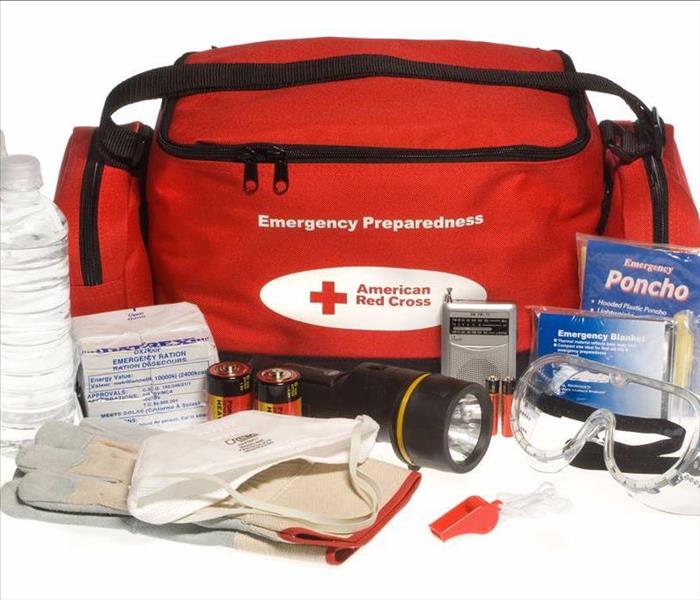 Emergency Ready Kit
Emergency Ready Kit
Be prepared for a power outage by keeping necessary items centrally located in your home. Take the time to ensure that everyone in your family is aware of the "kit." Periodically check your kit to see that batteries operate properly. The following is a list of items that are suggested to keep on hand:
1. Flashlights for each family member
2. Battery-operated radio and clock
3. Extra batteries
4. Containers of bottled water
5. Canned, freeze-dried or dehydrated food, powdered milk, baby supplies for infants
6. Non-electric can opener
7. List of important phone numbers
8. First-aid kit
Following a disaster, there may be power outages that could last for several days. Stock canned foods, dry mixes and other staples that do not require refrigeration, cooking, water or special preparation. Be sure to include a manual can opener and eating utensils. The following items are suggested when selecting emergency food supplies. You may already have many of these on hand.
•Store at least a three-day supply of non-perishable food.
•Choose foods your family will eat.
•Remember any special dietary needs.
•Avoid foods that will make you thirsty.
•Choose salt-free crackers, whole grain cereals and canned foods with high liquid content.
•Ready-to-eat canned meats, fruits, vegetables and a can opener
•Protein or fruit bars
•Dry cereal or granola
•Peanut butter
•Dried fruit
•Nuts
•Crackers
•Canned juices
•Non-perishable pasteurized milk
•High energy foods
•Vitamins
•Food for infants
•Comfort/stress foods
These and many other helpful tips are available at https://www.ready.gov/power-outages. When bad weather strikes the East Lansing/Haslett area, knowing what to do until SERVPRO of East Lansing/Haslett arrives will make a difference.
Call us directly at 517-999-0789.
IICRC Certified.. what it means to you.
1/30/2017 (Permalink)
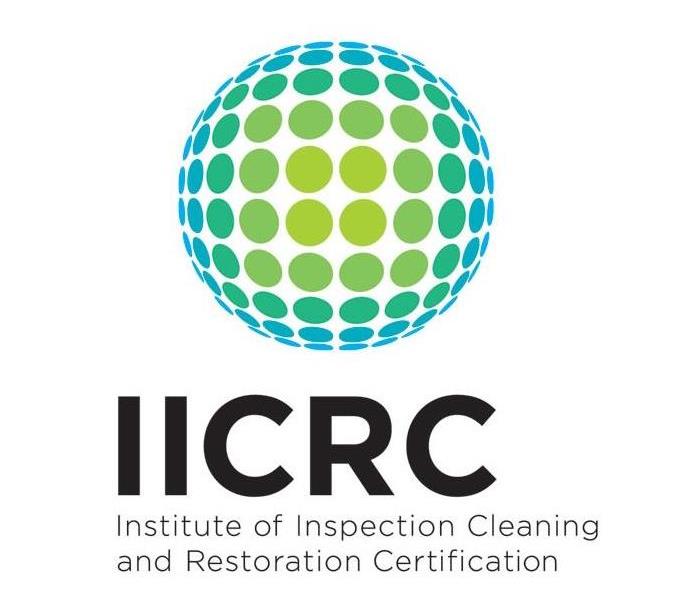 IICRC logos clearly identify certified technicians who have gone through rigorous training.
IICRC logos clearly identify certified technicians who have gone through rigorous training.
SERVPRO of East Lansing / Haslett is an IICRC firm. The Institute of Inspection, Cleaning and Restoration Certification (IICRC) creates the standards for the restoration industry and provides training and certification to restoration companies. IICRC Certified Firms have the right to display the IICRC Certified Logo.
IICRC Certified Firms must
• Present accurate information to consumers and conduct business with honesty and integrity.
• Require a technician on all jobs who has been formally trained and passed all required tests.
• Require a continuing education program to keep technicians up-to-date on the latest changes in the industry.
• Maintain liability insurance to protect all parties in the event of an accident.
• Maintain a written complaint policy and agree to Better Business Bureau or similar arbitration to resolve disputes, and accept the conclusions and recommendations of arbitration.
The IICRC Develops The Standards For The Restoration Industry
The IICRC has been the driving force in establishing the main industry standards and reference guides for professional carpet cleaning, water damage restoration and mold remediation. These IICRC standards take years to develop and require the coordination of experts in the field: manufacturers, industry organizations, insurance professionals, training schools, contractors, and public health professionals.
Every five years, the standards are reviewed and updated. The water damage restoration field changes rapidly with advancements in technology and science, and therefore the standards must evolve to keep pace.
About SERVPRO of East Lansing / Haslett
SERVPRO of East Lansing / Haslett specializes in the cleanup and restoration of residential and commercial property after a fire, smoke or water damage event. Our staff is highly trained in property damage restoration and we are an IICRC Certified Firm. We believe in continuous training: from initial and ongoing training at SERVPRO’s corporate training facility to regular IICRC-industry certification, rest assured our staff is equipped with the knowledge to restore your property.
Meet Our Crew
Our Employees
 Don't delay! When storm damages affects your property, call SERVPRO of East Lansing/Haslett to restore your space.
Don't delay! When storm damages affects your property, call SERVPRO of East Lansing/Haslett to restore your space.





 24/7 Emergency Service
24/7 Emergency Service






























